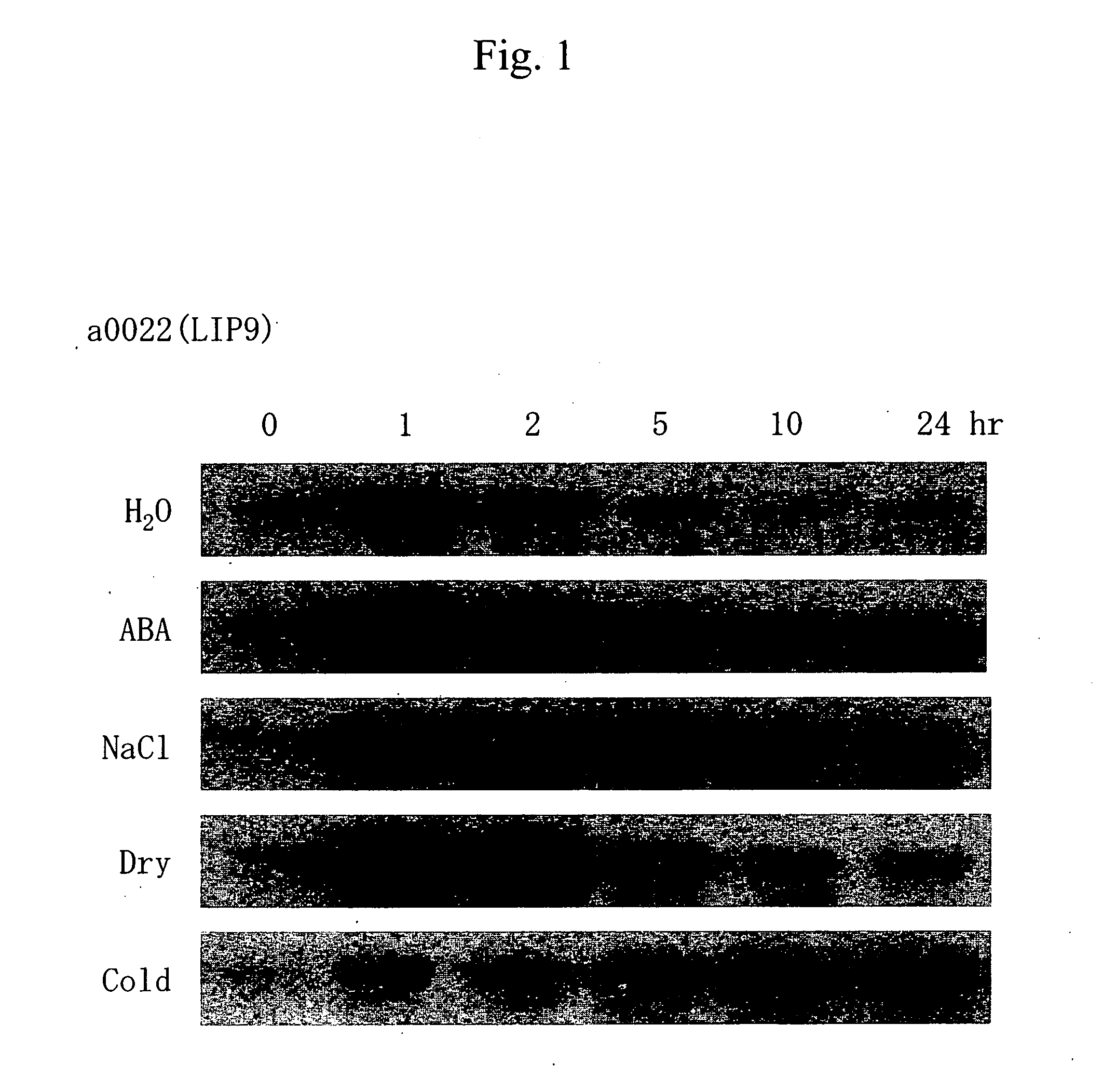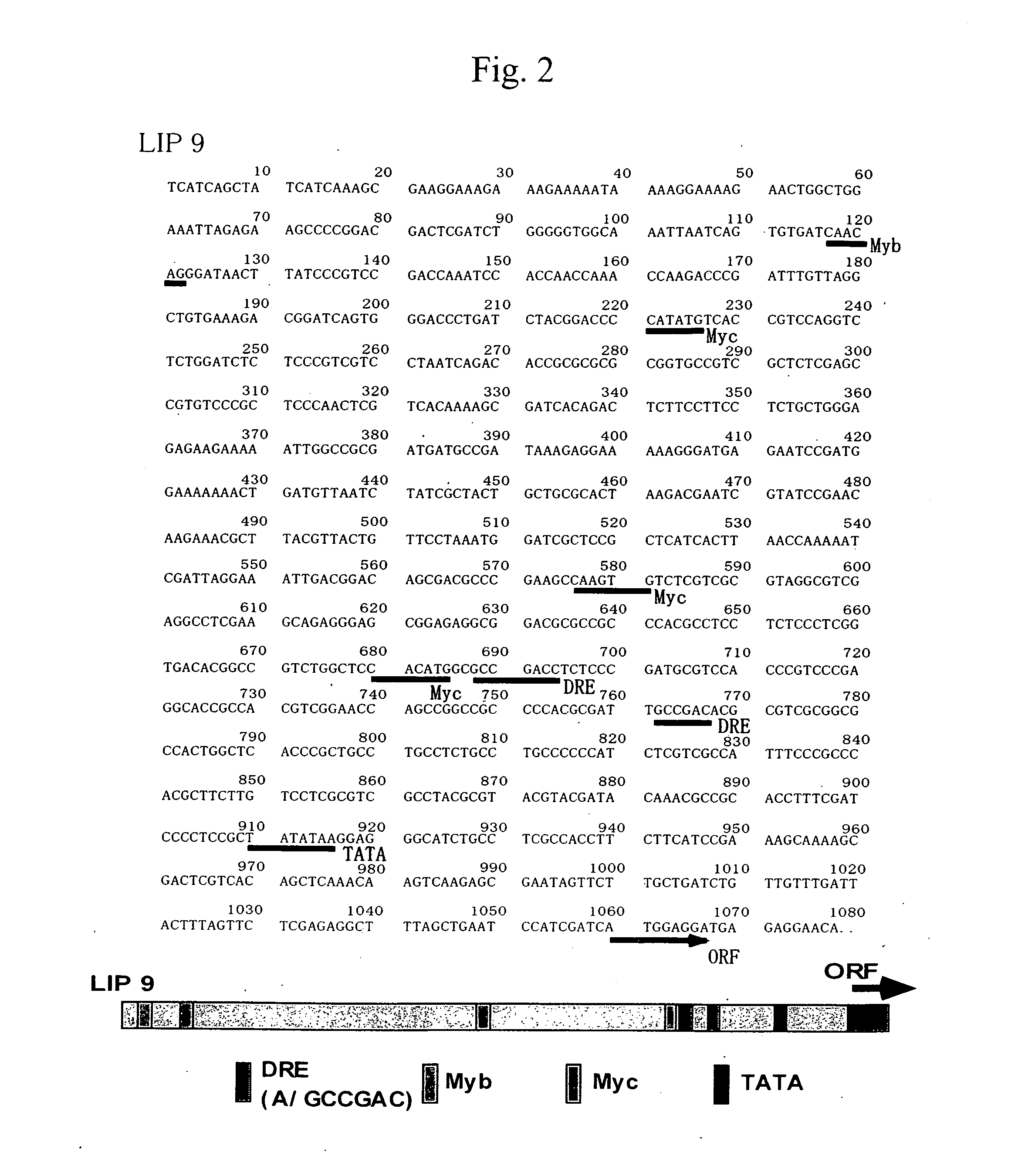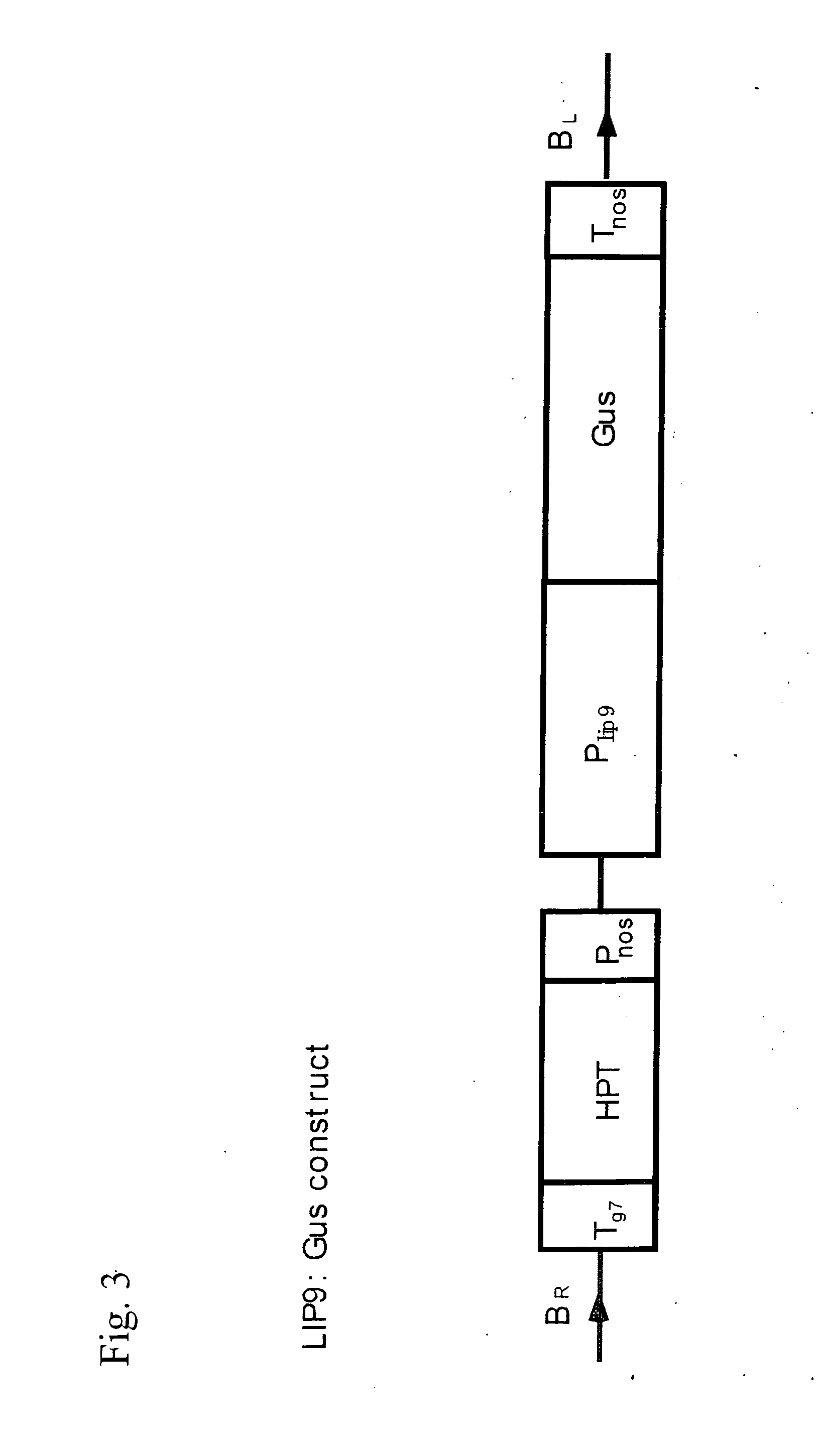Stress-induced promoter and method of using the same
- Summary
- Abstract
- Description
- Claims
- Application Information
AI Technical Summary
Benefits of technology
Problems solved by technology
Method used
Image
Examples
example 1
Identification of Stress-Inducible Rice Gene
[0085] Stress-inducible rice genes were searched for using cDNA microarrays and Northern analysis.
1. Production of Rice cDNA Microarray
[0086] Rice seeds (Nihonbare) that were grown hydroponically for 2 to 3 weeks were subjected to dehydration, salt, or low temperature stress. Dehydration stress was applied by air-drying at room temperature, salt stress was applied by culturing in a 250 mM NaCl solution, and low temperature stress was applied by cultivation at 4° C. The rice that had been subjected to each type of stress was frozen with liquid nitrogen. Total RNA was extracted from the frozen sample by the guanidine thiocyanate and cesium chloride method, and mRNA was prepared using the Oligo(dt)-cellulose column. cDNA was synthesized using the resulting mRNA as a template and using a HybriZAP-2.1 two-hybrid cDNA Gigapack cloning kit (Stratagene), and the cDNA was inserted and cloned at the EcoRI-XhoI cleavage site of HybriZAP-2.1 phage...
example 2
Screening of Promoter Sequence
1. Screening of Rice Genome Database
[0091] Using BLAST, the rice genome database of DDBJ was searched for a identical site of cDNA:a0022 (LIP9: SEQ ID NO: 2), which was selected as a stress-inducible gene in Example 1. As a result, in the gene in which identity was observed, the sequence located 1.1 kb upstream of the initiation codon toward the 5′ side of the gene was selected as a promoter sequence (SEQ ID NO: 1). A similar search was conducted concerning a0066 (WSI724: SEQ ID NO: 8), and the promoter sequence thereof (SEQ ID NO: 10) was selected.
[0092]FIG. 2 shows the structure of the LIP9 promoter region. As is apparent from FIG. 2, LIP9 comprises in its structure 2 DRE cis elements ((A / G)CCGAC). FIG. 7 shows the structure of the WS1724 promoter region. The WS1724 promoter was also found to comprise in its structure 2 DRE cis elements ((A / G)CCGAC).
2. Cloning
[0093] Based on the selected promoter sequences, primers were designed, PCR was carrie...
example 3
Activity of LIP9 Promoter Against Stress
(1) Preparation of Transgenic Plant
[0095] The promoter site of pBIG29APHSNot was substituted with an ubiquitin promoter of maize to produce G-ubi plasmid. The G-ubi plasmid was cleaved with BamHI-HindIII and ligated to a fragment of a similarly cleaved LIP9 promoter. The plasmid into which the LIP9 promoter had been incorporated was cleaved with BamHI-EcoRI and ligated to the Gus gene, which was similarly cleaved out from pBI221 (Clontech) with BamHI-EcoRI, to produce a GUS-expressing construct G-LIP9:GUS (FIG. 3). The plasmid G-LIP9:GUS was introduced by electroporation into Agrobacterium EHA105, which was washed with 10% glycerol after culturing, thereby preparing Agrobacterium EHA105 (G-LIP9:GUS). Rice was infected with this Agrobacterium EHA105 (G-LIP9:GUS) in the following manner to prepare a transgenic plant of interest.
[0096] Rice seeds were immersed in 70% ethanol for 1 minute and sterilized by immersion in 2% sodium hypochlorite f...
PUM
| Property | Measurement | Unit |
|---|---|---|
| Stress optical coefficient | aaaaa | aaaaa |
Abstract
Description
Claims
Application Information
 Login to View More
Login to View More - R&D
- Intellectual Property
- Life Sciences
- Materials
- Tech Scout
- Unparalleled Data Quality
- Higher Quality Content
- 60% Fewer Hallucinations
Browse by: Latest US Patents, China's latest patents, Technical Efficacy Thesaurus, Application Domain, Technology Topic, Popular Technical Reports.
© 2025 PatSnap. All rights reserved.Legal|Privacy policy|Modern Slavery Act Transparency Statement|Sitemap|About US| Contact US: help@patsnap.com



